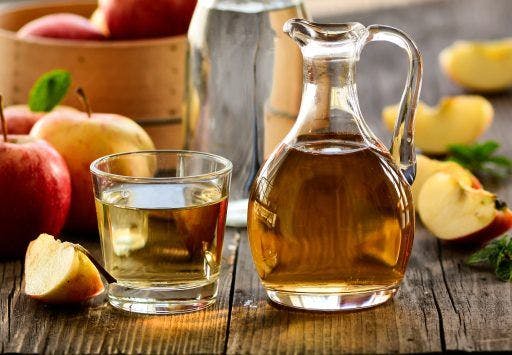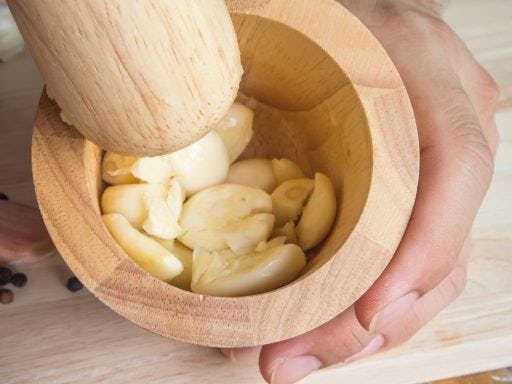Some things in life instantly make your mood go downhill – slow wi-fi, long traffic jams, and losing an earbud. Tooth pain, however, can turn your whole week upside down.
The throbbing soreness makes it hard to work, sleep, and eat. On top of it all, you’re not sure why it happens. Could it be an infection or a sign to remove your wisdom tooth?
Ideally, the first person you call for help is your dentist. But securing an emergency appointment at a dental clinic can be challenging and expensive. Find out what could be causing your toothache, how you can treat it at home, and when it’s imperative to seek professional care below.
What causes tooth pain?

The location of and the symptoms that come paired with your tooth pain can help point to the cause behind it. For example, aching and bleeding around your teeth and gums may indicate gum disease. Or if your teeth are generally sensitive and your jaw is aching, you could be grinding your teeth at night.
Causes of toothache and swelling include:
- Gum disease, also known as periodontal disease, such as gingivitis
- Tooth decay
- Eruption of wisdom tooth
- A tooth abscess
- A dental injury, including a cracked or chipped tooth
- A jaw injury
- Complications from crooked teeth
What makes tooth pain worse?
Besides the inflammation of the dentin (the layer of your tooth just under the surface), other conditions could cause your toothache to worsen. These can include sinusitis and mouth ulcers.
Other actions and habits can also worsen your condition. Here are a few things to avoid when suffering from tooth pain:
- Smoking
- Eating chewy food
- Drinking very hot or icy beverages
- Eating or drinking acidic or spicy food or beverages, especially if you have mouth ulcers
- Failing to clean your teeth, though you may want to use a soft toothbrush to avoid sensitivity issues
To help with pain relief, you can hold a cold compress against the painful side of your face, which will reduce swelling and numb the area. When lying in bed, try to keep your head propped up on your pillow instead of lying flat, which can put pressure on the painful area.
Tooth pain first-aid and home remedies
While waiting for a check-up, take matters into your hands by finding emergency toothache relief. It may not address the cause, but it will help you get through the days between now and your dental visit. You have many options to choose from. Check to see if you have these home remedies and try them yourself.
1. Apple cider vinegar

Swollen gums that bleed when brushing teeth are a hallmark of gum disease. Sometimes, it comes with bad breath and pain that shoots to the teeth, jaw, and ear.
If you recognise these symptoms, apple cider vinegar (AVC) can help disinfect inflamed gums. A study published in the Cureus Journal of Medical Science reveals ACV is effective in removing dental plaque and killing bacteria – two possible causes of gum infection.
While ACV is worth trying as a toothache remedy, don’t go overboard. It is very acidic, which can erode enamel, leading to tooth decay. A way to reap its benefits and none of the cons is to use it after brushing your teeth. Fluoride from toothpaste makes enamel more resistant to acid. Soak up some ACV using a Q-tip, then dab it on the inflamed gum.
2. Salt water as a mouthwash
Using mouthwash after brushing your teeth is good dental care. However, mouthwash typically contains alcohol to preserve and enhance its effectiveness. Alcohol can dry out your mouth and irritate your affected teeth and gums.
One of the simplest alternatives is a saltwater rinse. Salt is a natural antiseptic with no reported side effects, and you probably already have it on your dinner table. A 2016 study shows saline mouthwash helps soothe inflammation and heal mouth ulcers.
Make your DIY salt mouthwash by mixing half a teaspoon of salt with a cup of warm water. Swish it around your mouth for two minutes and spit it out. Do this three times a day for maximum results.
3. Aloe vera
For centuries, the beauty industry has revered aloe vera as a skin moisturiser and hair mask. But aloe vera also relieves tooth pain. The gel has anti-inflammatory, antifungal, and analgesic (pain relief) properties that can alleviate toothache. In the Benefits of Aloe Vera in Dentistry study, researchers learned that this succulent worked well in helping patients with gingivitis and cavities.
It’s a good idea to do a patch test on your skin before applying it to your mouth. If you don’t feel any itchiness or a burning sensation, then get your gloves ready and harvest some aloe leaves (store-bought is okay, too).
Cut one end of the leaf and soak it in water for 15 minutes to release the bitter sap. Next, peel the leaf and scoop the gel into your blender or food processor. Blend it until it becomes a gooey liquid, which you can apply directly to your tooth or gum.
4. Garlic

Garlic’s reputation for vampire-slaying may be mythical, but its benefits for oral health are all facts. Chewing raw garlic releases allicin, an enzyme that balances the ratio of good and bad bacteria inside your mouth. It reduces risks of tooth decay and gum diseases, according to a 2021 study.
Unfortunately, allicin is hypersensitive to heat. So, you won’t be able to cook it and will have to put up with the raw pungent smell and taste. You can either chew or rub raw garlic paste to alleviate tooth pain. Let it sit for a few minutes so the garlic can do its magic.
5. Cinnamon
Here’s a fun fact – healthy enamel is smooth. Roughness indicates oral problems, such as plaque or tartar buildup and corrosion. If your teeth feel rough or fuzzy, cinnamon is your go-to ingredient. Like aloe vera, cinnamon inhibits bacterial growth, preventing your tooth pain from worsening. The Journal of Physics: Conference Series reports that using cinnamon in mouthwash can reduce tooth enamel roughness.
Cinnamon is not the best-tasting spice when consumed on its own. Mix cinnamon powder with honey and apply it directly to your tooth. A more practical use for cinnamon is by diluting it in warm water as a mouth rinse. Add baking soda to rebalance the acidity if you have sensitive teeth.
When to see your dentist
You can opt for professional care as soon as you experience any tooth pain. But even if you’d rather try a home remedy or see if it goes away on its own, schedule a dental checkup if the pain or swelling lasts more than two days.
Once you’re at the dentist’s office, tell them about any symptoms you’re experiencing and medical conditions you may have. Even if some of those symptoms have gone away, you may want to mention them anyway.
Seek urgent care if you experience trouble breathing, and see a doctor if you have a fever above 38⁰C or any issues with breathing or swallowing.
Even if your tooth pain goes away or becomes bearable, keep your next appointment with your trusted dentist. They know what’s best for your teeth. Tell them if your toothache is a recurring issue. It might have something to do with your teeth alignment.
Unlike braces, clear aligners like ClearCorrect are nearly invisible. Its stain-resistant ClearQuartz technology delivers consistent and gentle push to align your teeth. Plus, you can still eat whatever you want without discomfort. Make sure to check out all your options to rid yourself of that ache.
References:
Asaad, N., & Laflouf, M. (2022). Effectiveness of Apple Cider Vinegar and Mechanical Removal on Dental Plaque and Gingival Inflammation of Children With Cerebral Palsy. Cureus.
Department of Health and Aged Care, Australian Government. (n.d.). Toothache and swelling. healthdirect.gov.au.
Huynh, N., Everts, V., Leethanakul, C., Pavasant, P., & Ampornaramveth, R. S. (2016). Rinsing with Saline Promotes Human Gingival Fibroblast Wound Healing In Vitro. PLOS ONE, 11(7), e0159843.
Mangaiyarkarasi, S., Manigandan, T., Elumalai, M., Cholan, P. K., & Kaur, R. P. (2015). Benefits of Aloe vera in dentistry. Journal of Pharmacy and Bioallied Sciences, 7(5), 255.
Nurmalasari, D., Damiyanti, M., & Eriwati, Y. K. (2018). Effect of cinnamon extract solution on human tooth enamel surface roughness. Journal of Physics.
Sasi, M., Kumar, S., Kumar, M., Thapa, S., Prajapati, U., Tak, Y., Changan, S., Saurabh, V., Kumari, S., Kumar, A., Hasan, M., Chandran, D., R., Punia, S., Dhumal, S. S., Senapathy, M., Thiyagarajan, A., Alhariri, A., Dey, A., . . . Mekhemar, M. (2021). Garlic (Allium sativum L.) Bioactives and Its Role in Alleviating Oral Pathologies. Antioxidants, 10(11), 1847.



